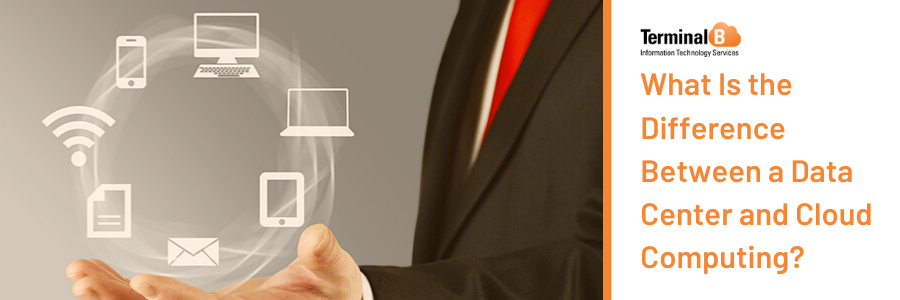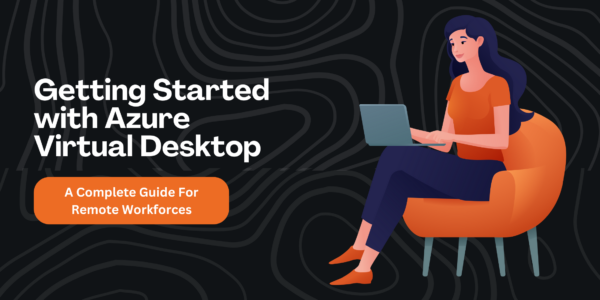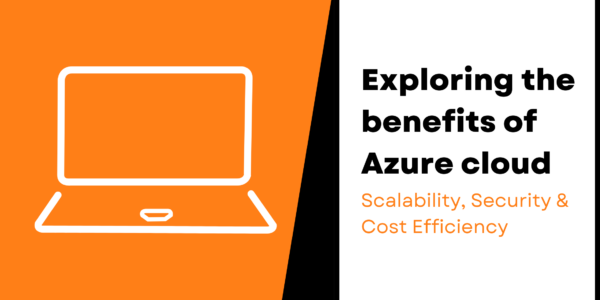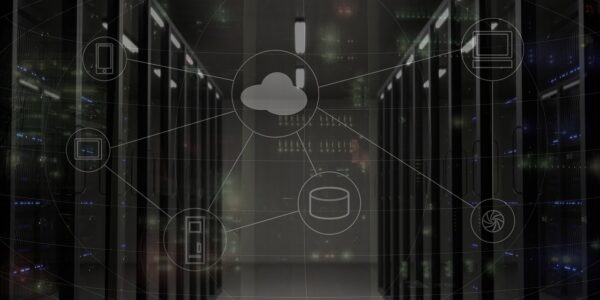Unlock the full potential of remote work with Azure Virtual Desktop, your gateway to a…

What Is the Difference Between a Data Center and Cloud Computing?
Until recently, businesses have relied on on-premises data centers to house their servers, data, and applications. But systems for hosting data pipelines are now available entirely in the cloud.
As the COVID-19 pandemic has forced so many businesses to adopt cloud-based services almost overnight, many business leaders are facing the question of whether they should continue to rely on data centers or move their data storage and processing to the cloud. In this article we take you through the respective features of data centers and the cloud, the key differences between the two options for data storage and processing, and which one is better for your business.
What’s a data center?
A data center is a building or space used to house infrastructure such as computer hardware, as well as telecommunications and storage systems. On-premises data centers store, process, and distribute an organization’s data via a network of computers. A team of professional IT experts is responsible for managing the data center.
What is the cloud?
Microsoft defines cloud computing as the delivery of computing services such as databases, networking, software, analytics, and intelligence over the Internet (“the cloud”). The purpose is to speed up innovation, make resources more flexible, and enhance economies of scale. Businesses generally pay only for the cloud services they use. As an IBM article points out, in addition to offering metered services, cloud computing allows companies to scale up or down quickly and to gain self-service access to IT resources.
What are the differences?
The key differences between a data center and cloud computing can be defined in the areas of architecture and accessibility, security and control, capacity and scalability, and maintenance and cost.
-
Architecture & Accessibility
The traditional data center is in a physical site on-premises, meaning that all of its functionality is accessible within enterprise office space. A data center could be as simple as a few computers under a desk, or it could involve a climate-controlled room lined with servers, or even an entire building. It is managed by an in-house IT team employed and paid by the business that owns it.
The cloud is a virtual environment with no physical presence for the end user. Their network will be based on a virtual ‘cloud server’, accessible only via the internet. The physical servers and other infrastructure that run this virtual network are located wherever the cloud service provider chooses to put them – usually where they can be maintained as securely and cheaply as possible. Sometimes called a ‘server farm’, this central storage and processing facility is managed by a third-party company or the service provider.
-
Security & Control
Security is often mentioned as a drawback of cloud computing because the cloud is internet-based and perceived to be more vulnerable to data breaches and privacy invasions. Data centers are perceived to offer greater inherent security because they are based in-house and can restrict access more easily. However, with rapid developments in encryption and other security protocols, cloud security risks are now on par or less than traditional data centers.
With the cloud, security, DevOps, and operations teams must ensure appropriate security controls are in place. Built-in security layers must be incorporated at every level from the data center to the operating system. Other measures include cutting-edge physical security and regular vulnerability scans carried out by highly skilled specialists.
-
Capacity & Scalability
A data center’s capacity is limited by its physical storage, power, and cooling requirements. However, users can access unlimited capacity with cloud computing. And if your organization’s capacity requirements change suddenly, you can scale up or down almost instantly and easily to meet your changing demands. These kinds of flexible, scalable storage and compute services are not available with data centers.
-
Maintenance & Cost
Planning and building a traditional data center is time-consuming and costly, and hardware obsolescence will incur further expenses over time. On the other hand, initial outlay for cloud computing is generally low and, as the infrastructure costs are borne by the cloud provider, there are no hardware-lifecycle expenses to consider. Customers pay for the resources they use, reducing the overall cost of ownership while simplifying accounting and financial planning. The provider also administers and maintains the cloud data center, so you don’t have to worry about software updates or repair during downtime or outages.
Cloud computing in the age of remote work
The rapid shift to remote working has accelerated the move to cloud computing. Even before the COVID-19 pandemic, Gartner had predicted that worldwide public cloud services would grow by 17 % in 2020. The demands of remote working applications and workloads are difficult to meet with the restricted capacity of physical data centers. Furthermore, almost all new digital solutions require the agility and power of a cloud platform to deliver optimal results.
Which Is Right for Your Business?
Your choices of cloud computing include public, private, or a hybrid of both. The decision depends on your business. You can learn more about these options and the pros and cons of cloud computing here.
However, if your architecture is too complex to move or the costs outweigh the benefits in your case, cloud may not be the optimum choice for you. You may be better off sticking to the traditional data-center model.
Conclusion
Terminal B has been a trusted provider of Microsoft’s key business productivity cloud platforms for more than a decade. Our clients value our reliability and emphasis on security, with multiple third-party audits validating the performance of our data center. If you are still considering moving to the cloud, or you are in the cloud-migration process, we can make the process easier and more transparent.
If you are running on the cloud already, we can help you deal with every obstacle, tracking your requirements so that you can harness all the benefits of this powerful technology. Contact us to learn more about how Terminal B’s Cloud Services can make your organization more productive and secure.
However, if your architecture is too complex to move or the costs outweigh the benefits in your case, cloud may not be the optimum choice for you. You may be better off sticking to the traditional data-center model.


